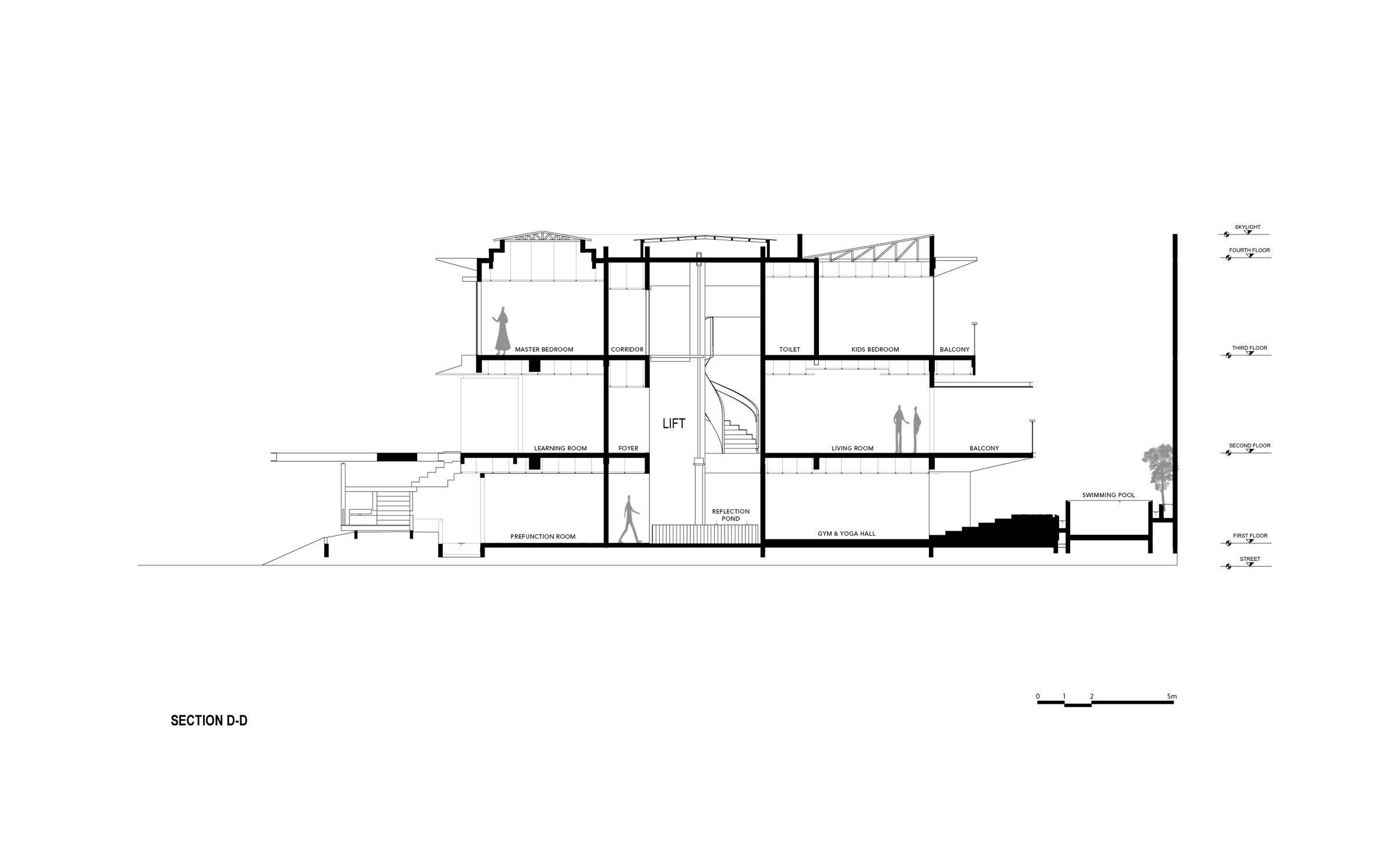In this project, the main inspiration came from the need to create a home that is not only comfortable but also environmentally efficient. The core concept revolves around making the core of the house the central integration point for various structural elements, utility systems, MEP (mechanical, electrical, plumbing), vertical circulation, and building physics. This core was designed to extend from the first to the third floor, serving as a hub for natural light and air, enabling the stack effect. The stack effect creates a natural airflow where hot air rises, keeping the lower levels cooler.

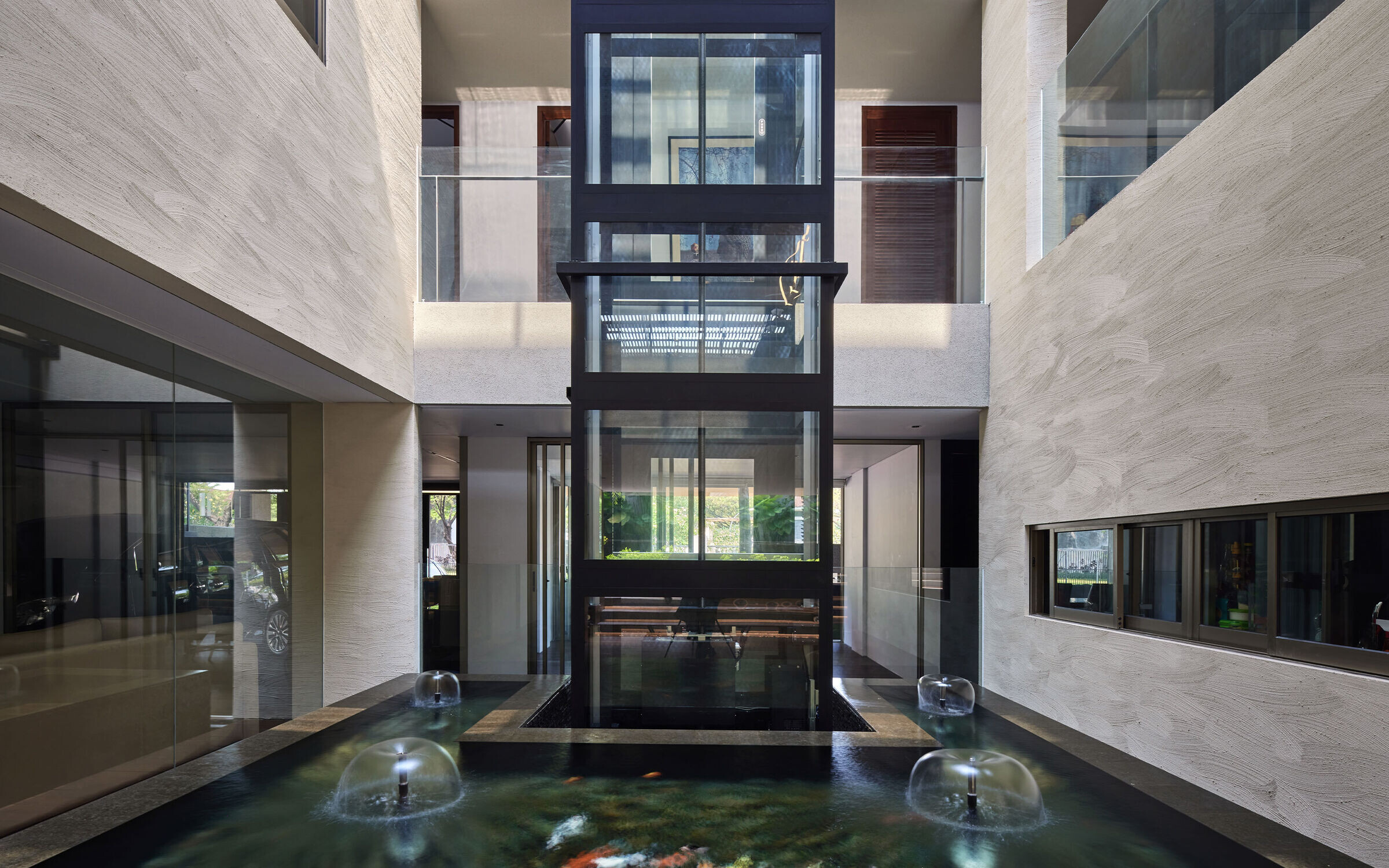
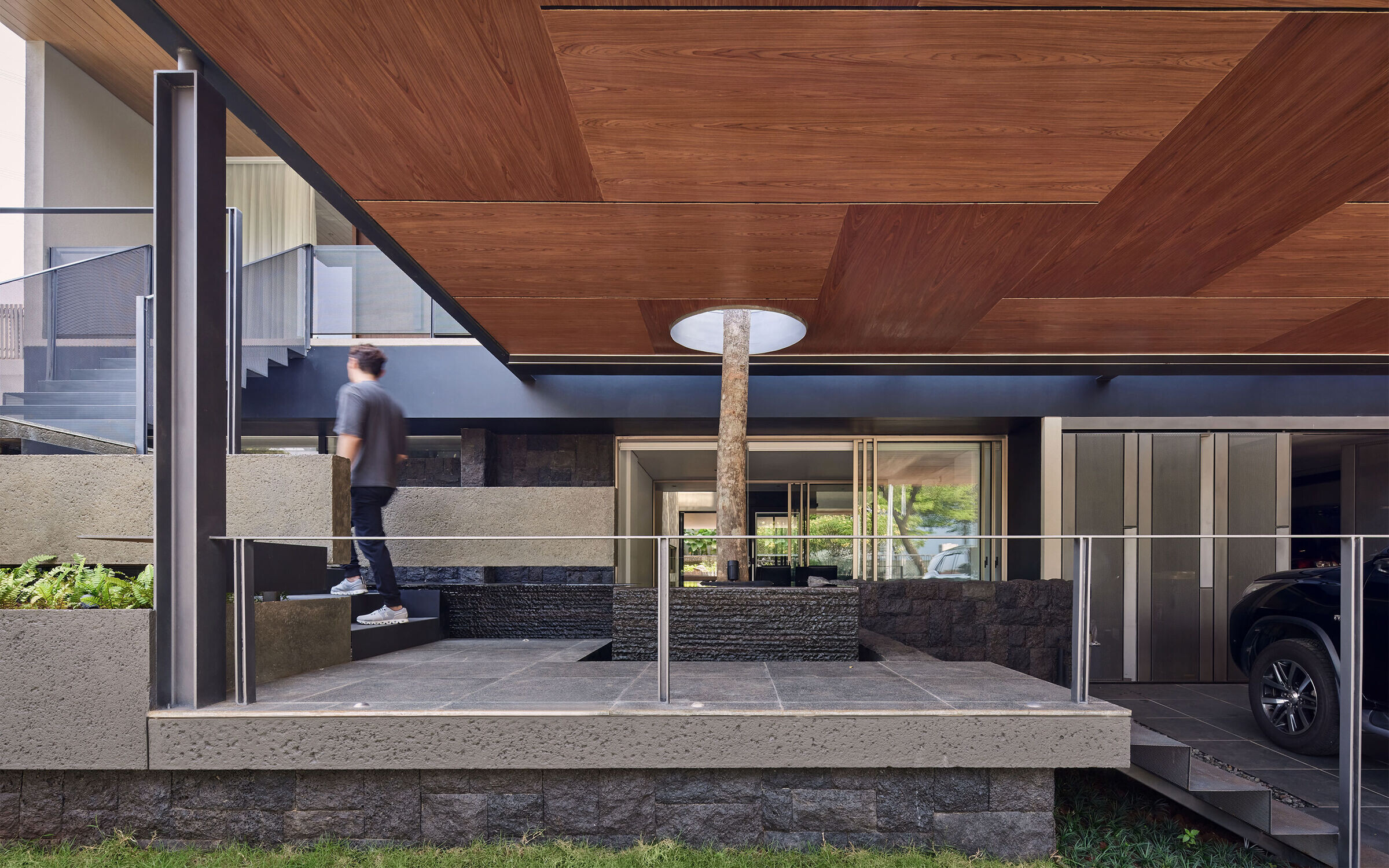
The skylight at the core allows ample sunlight to enter the house. However, to mitigate the potential for excessive heat, a koi pond at the base of the core helps cool the surrounding area, maintaining thermal balance within the home. Additionally, the house’s north-south orientation maximizes airflow and natural lighting through openings at the front and back, ensuring cross-ventilation.
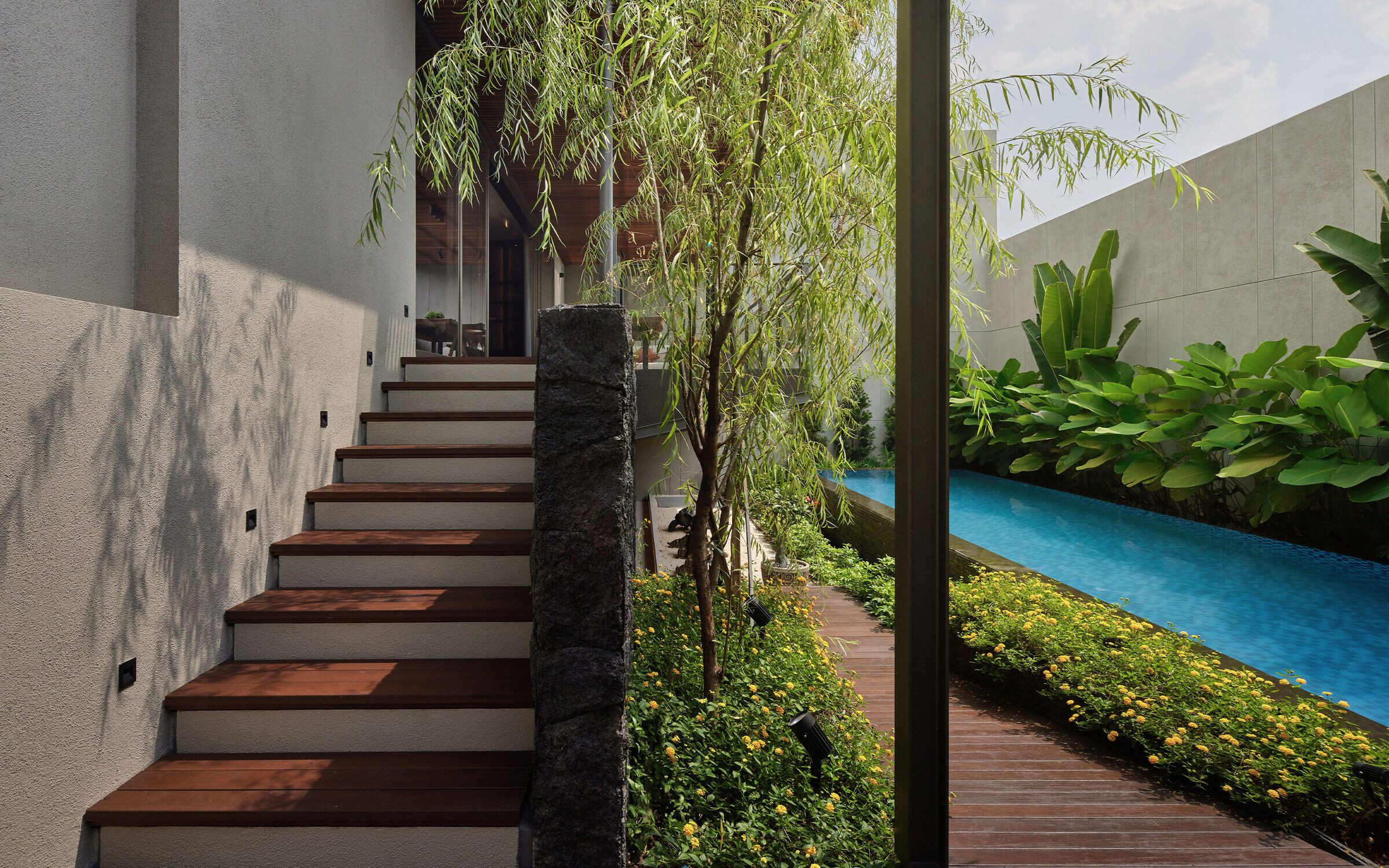


This project came with its challenges. One of the initial obstacles was a regulation from the developer prohibiting the use of fences around the house, while the owner wanted to ensure privacy. The solution was to slightly elevate the front garden and incorporate elements like stairs, natural stone, and horizontally designed concrete to block the view from passersby. This strategy maintained privacy without violating the developer's guidelines. Another challenge was the need for many rooms, which gave the house a bulky appearance. To counter this, a void was placed at the center of the house, functioning as the core. This void allows each room to have access to natural light and airflow, making the spaces feel brighter and more open.
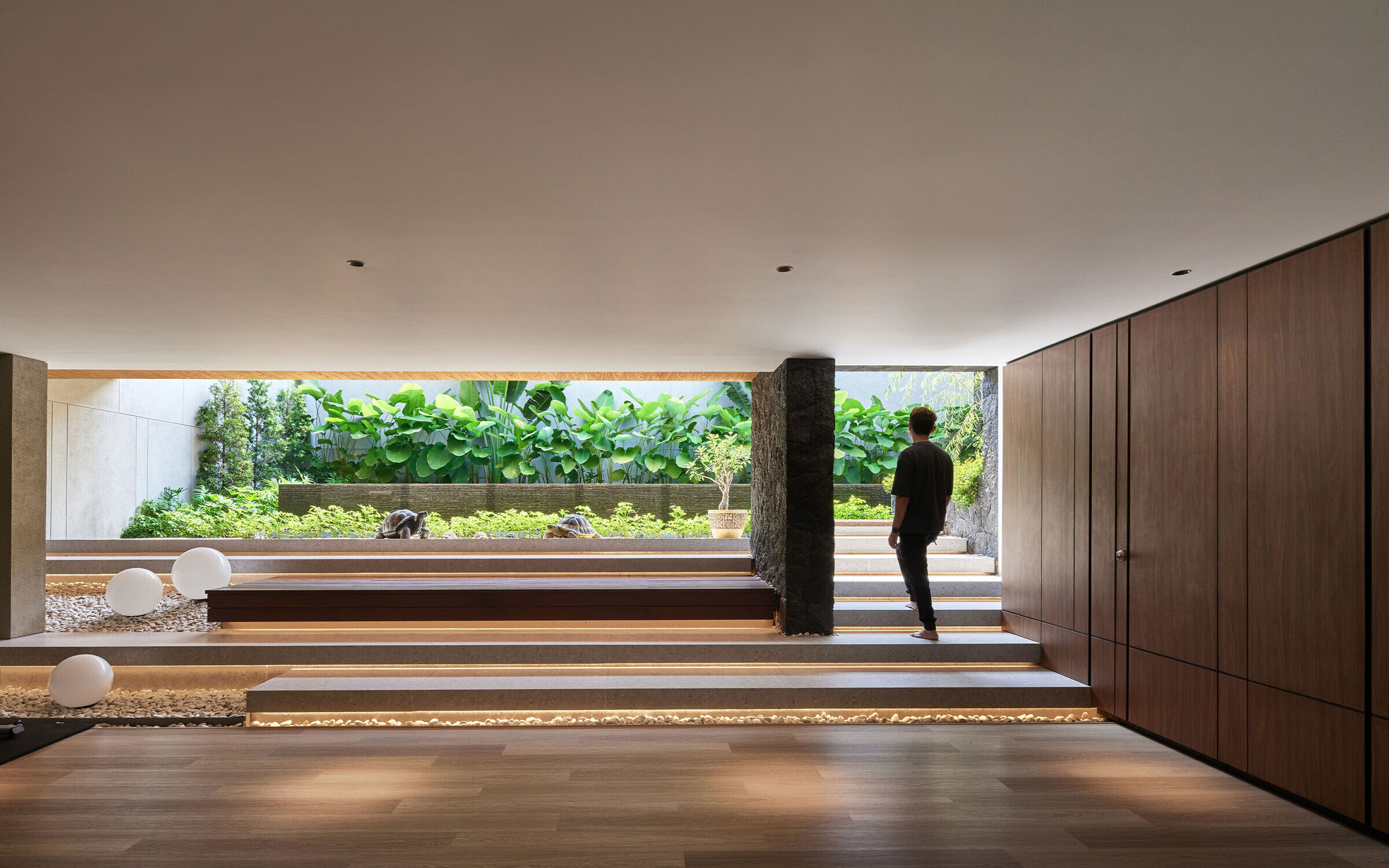
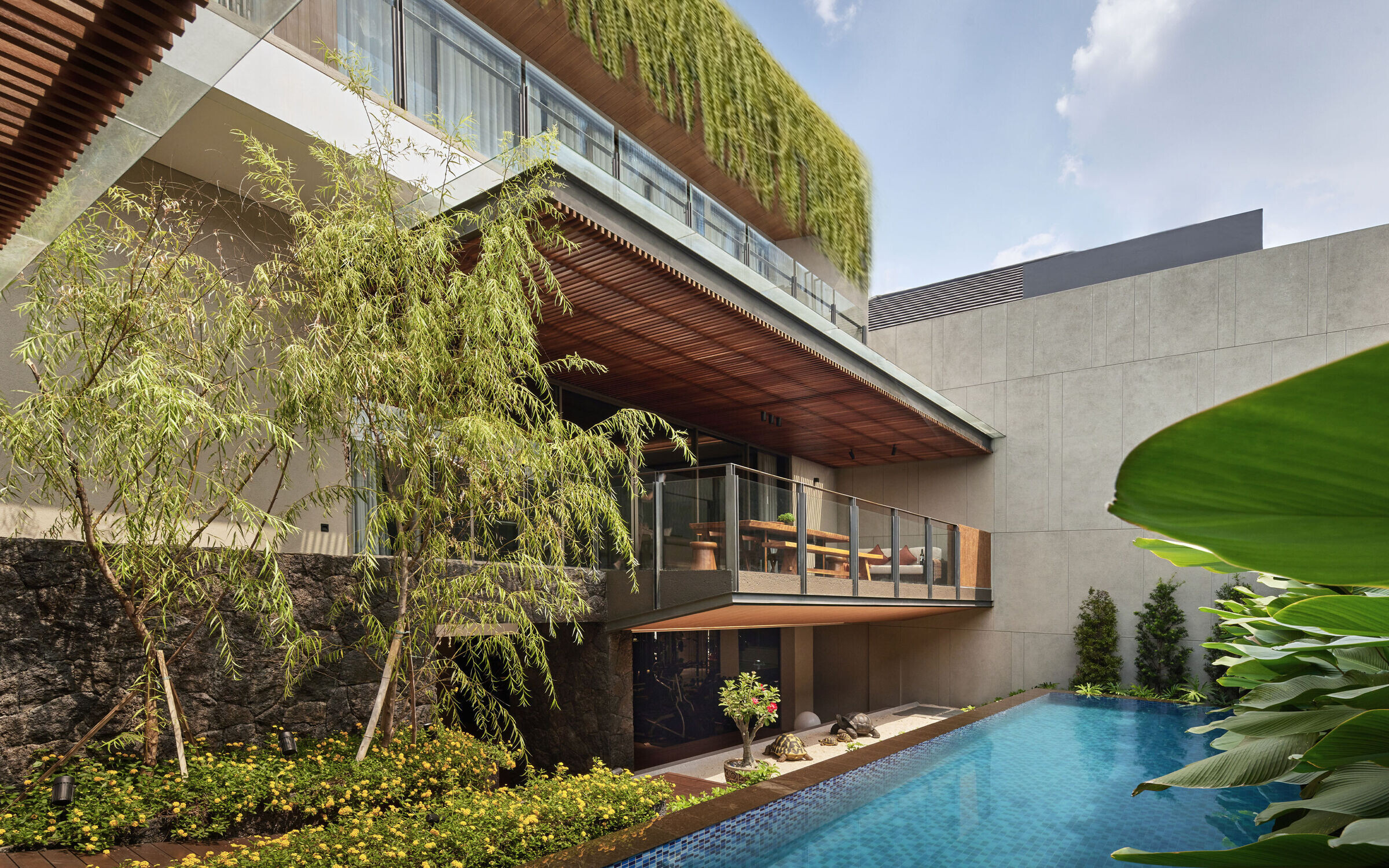
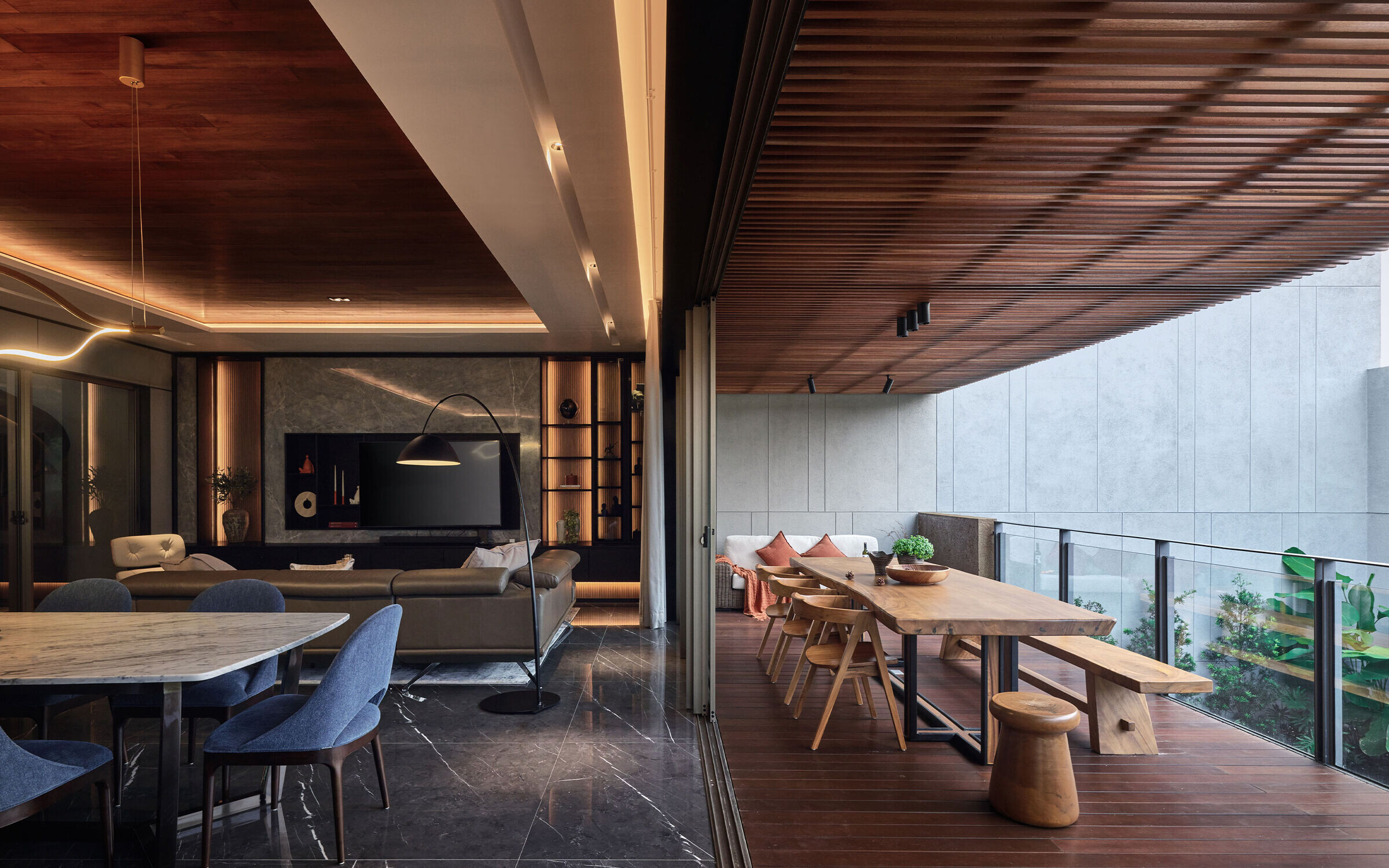

From a construction standpoint, the house uses materials that are readily available in Jakarta. Consideration was also given to materials that age well and are easy to maintain. Natural stone, textured paint, and plaster were widely used throughout the project. The house's primary structure is made of concrete, the most common and easily applicable material in Indonesia. Steel was used in certain areas, like the carport, but only in sections separate from the main structure to minimize the risk of cracking over time due to Jakarta's heat.
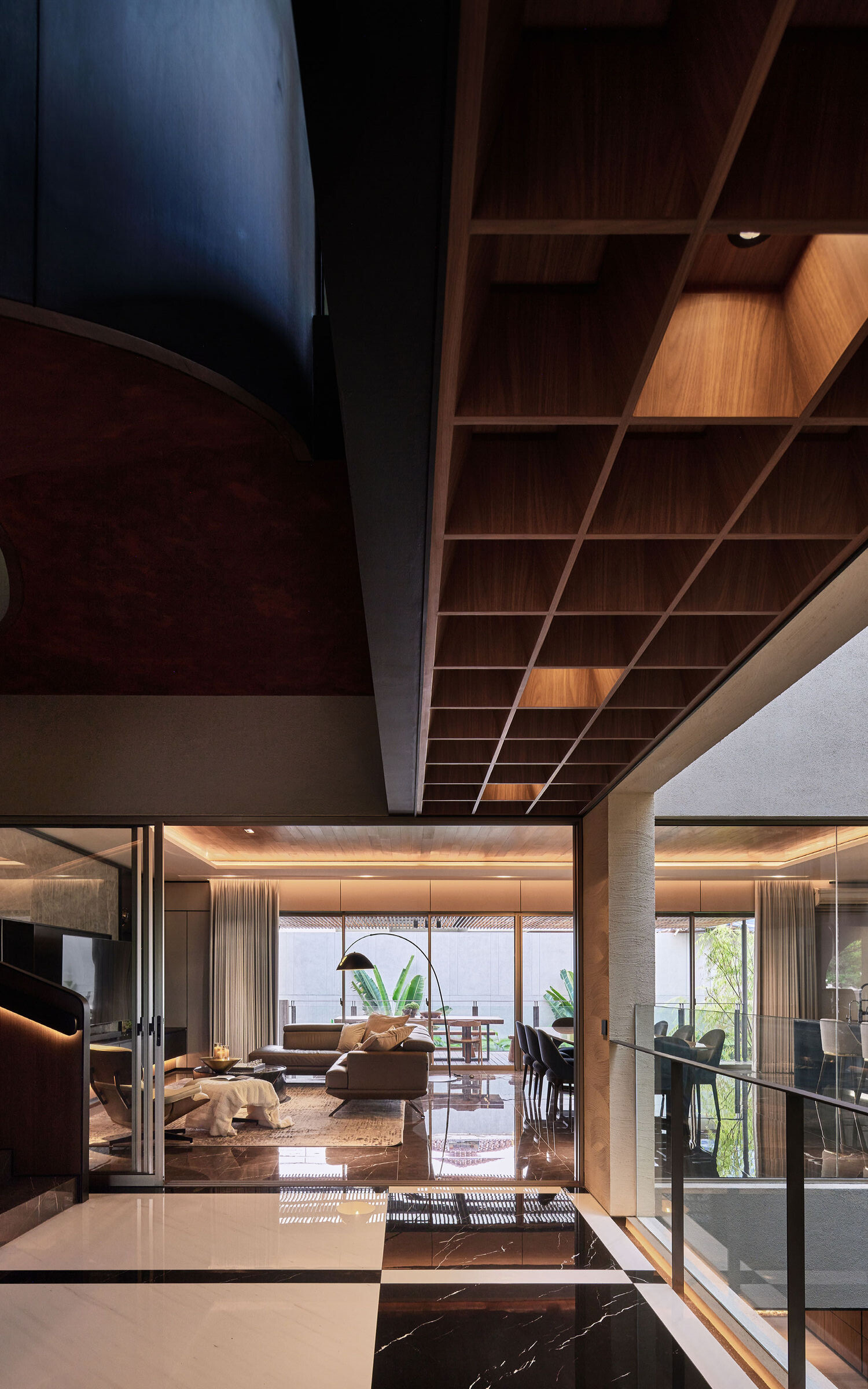
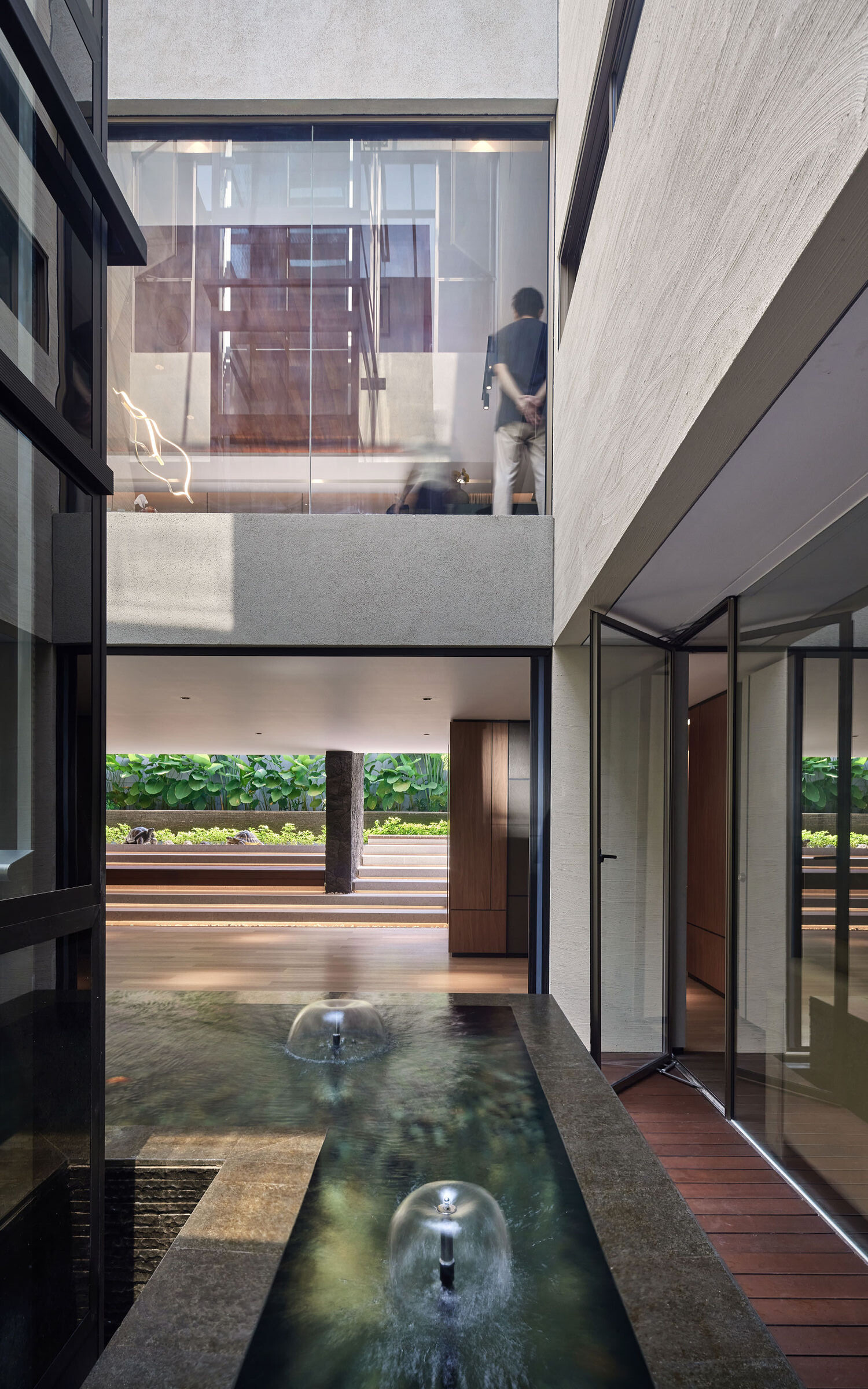
The house was designed not only as a place for physical rest but also as a space for emotional recharge for a career-driven couple. Thus, the design considerations focused not only on spatial needs but also on the overall spatial experience. Clear zoning was applied: the first floor is public, primarily used for service areas and shared amenities like a gym, yoga room, and theater. The second floor is semi-private, with family gathering spaces like the living room, dining room, and kitchen, while the third floor is entirely private, housing the master bedroom and children’s rooms.

The building mass was divided into two parts, separated by the core void. However, connectivity between the two masses was maintained through a bridge linking both sides of the house. To enhance the spatial experience, the swimming pool, originally planned for the second floor, was lowered by half a meter, positioning it between the first and second floors. This decision creates a unique visual experience and establishes a more dynamic circulation between the floors. Additionally, the pool helps distribute natural light and air to both floors, reducing the potential for dark and damp spaces. This pool area also adds outdoor space for relaxation and gatherings, offering a comfortable spot for the homeowners to have intimate moments.
